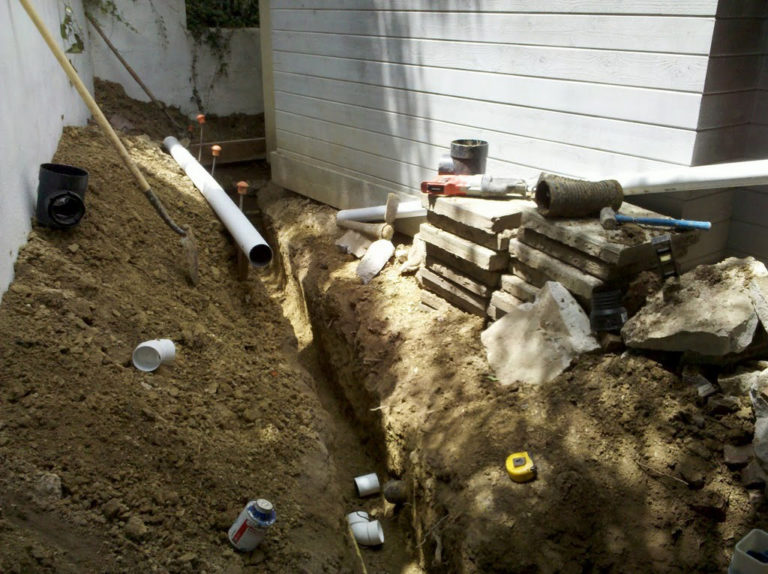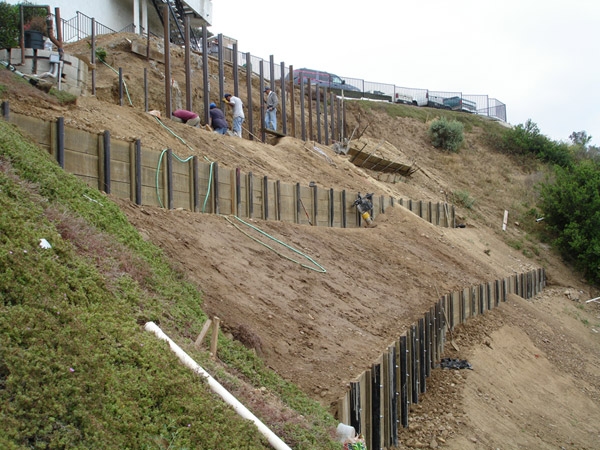A landslide is defined as the movement of a mass of rock, debris, or earth down a slope. Landslides are a type of land degradation, which refers to any downward movement of soil and rock because of gravity.
Typically, landslides refer to five modes of slope movement:
- Falls. The collapse of material from a cliff or steep slope.
- Topples. Involve the forward rotation and movement of a mass of rock, earth or debris out of a slope.
- Slides. The down-slope momentum of material along a distinctive ruptured or slipping surface.
- Flows. Relative movement in various layers of the medium (e.g. mudslide) whereas a slide occurs only along one or several interfaces or beds.
- Spreads. A lateral expanse of earthen materials that is often because of increased moisture.
The type of geologic material such as bedrock, debris, or earth further subdivides these types of slope movement. Debris flows (commonly called mudflows or mudslides) and rock falls are examples of common landslide types.
What Causes Landslides?
Slope movement or landslides may occur when gravity or pressure creates a down-slope which is greater than the strength of the earth that supports the slope.
Specific causes may include:
- Increased downslope forces
- Low or reduced slope strength
- Moisture changes (e.g. by steam erosion, rainfall, snowmelt, or changes in groundwater)
- Earthquakes or volcanic activity
- Human disturbance
Residential Damage Caused By Landslides
When supporting structures are not properly maintained, landslides can cause significant property damage.
Some of the most common damages include:
- Foundation Problems. Landslides can cause cracks in the foundation, foundation setting or sinking, uneven floors or floors which are noticeably sagging or sinking. If you are seeing any of these signs, it’s worth the effort to get a foundation repair expert out to your home to assess the situation.
- Destabilization. After a landslide, retaining walls or property slopes may be destabilized, which can cause erosion and runoff, increases site safety, and can overall improve the look of your property.
Drainage Issues. An important component of landslide control services is drainage and stormwater management. Aside from human use, water is erosion’s second-biggest enemy. In order to best combat both issues, determining the appropriate retaining wall or erosion control method is critical to the success of landslide control.


Landslide Control & Repair Process
The effective repair and the prevention of erosion requires expertise and is dependent on the type of project or damage at hand. Usually, the goal is to assess the amount of slope destabilization sustained during a landslide or to implement a plan for surface erosion control which includes the process of assessing the amount of stress a slope or earthen area can manage before failing. A stabilization plan can be developed and implemented to help prevent erosion or landslides.
Typically the process goes as follows:
Phase 1 | Analysis. Before deciding which approach to damage mitigation is best, an assessment needs to be conducted. During the consultation an expert will assess the site conditions as well as the slope geometry. Several other factors will also need to be considered, such as:
- What type of damage was sustained
- Identifying potential damage
- Determining footing size
- If a block wall or poured in place concrete is necessary
- If stabilization requires the use of caissons
Phase 2 | Stabilization Plan Development. After the assessment stage, our experts move into the design stage. During this part of the process, a customized plan is developed. Sometimes this will require using chemical compounds to reinforce slope material or calls for the installment of physical reinforcement, such as piles or retaining walls. Depending on the project, landslide control will work to divert debris pathways, and reroute surface and underwater drainage.
Phase 3| Implementation. Once the design has been finalized, the reinforcement part of the process can begin. Typically, this will include the following stabilization and/or control methods:
- Concrete Retaining Walls. This method uses concrete blocks, which lock together and does not require any mortar to bond them. The soil behind it must be tightly packed to maintain a solid hold. If any loose soil exists the retaining wall may weaken and may ultimately collapse. Concrete retaining walls easily form curves which is typically a requirement of this stabilization approach.
- Steel Beam/Pipe Pile Retaining Walls. These are often used on extreme slopes where a concrete wall is too expensive. The steel beams are usually placed in a pre-drilled hole and encased in concrete.
GeoGrid Systems. GeoGrid textile fabric is often used to rebuild slopes that have previously failed due to a landslide or mudslide. Generally, this is often the most cost effective approach.

Unlimited Drilling & Foundations Inc. was founded in 1993. Over the past 28 years, the company has completed thousands of foundation repair, slope stabilization and drainage systems projects in Southern California.
